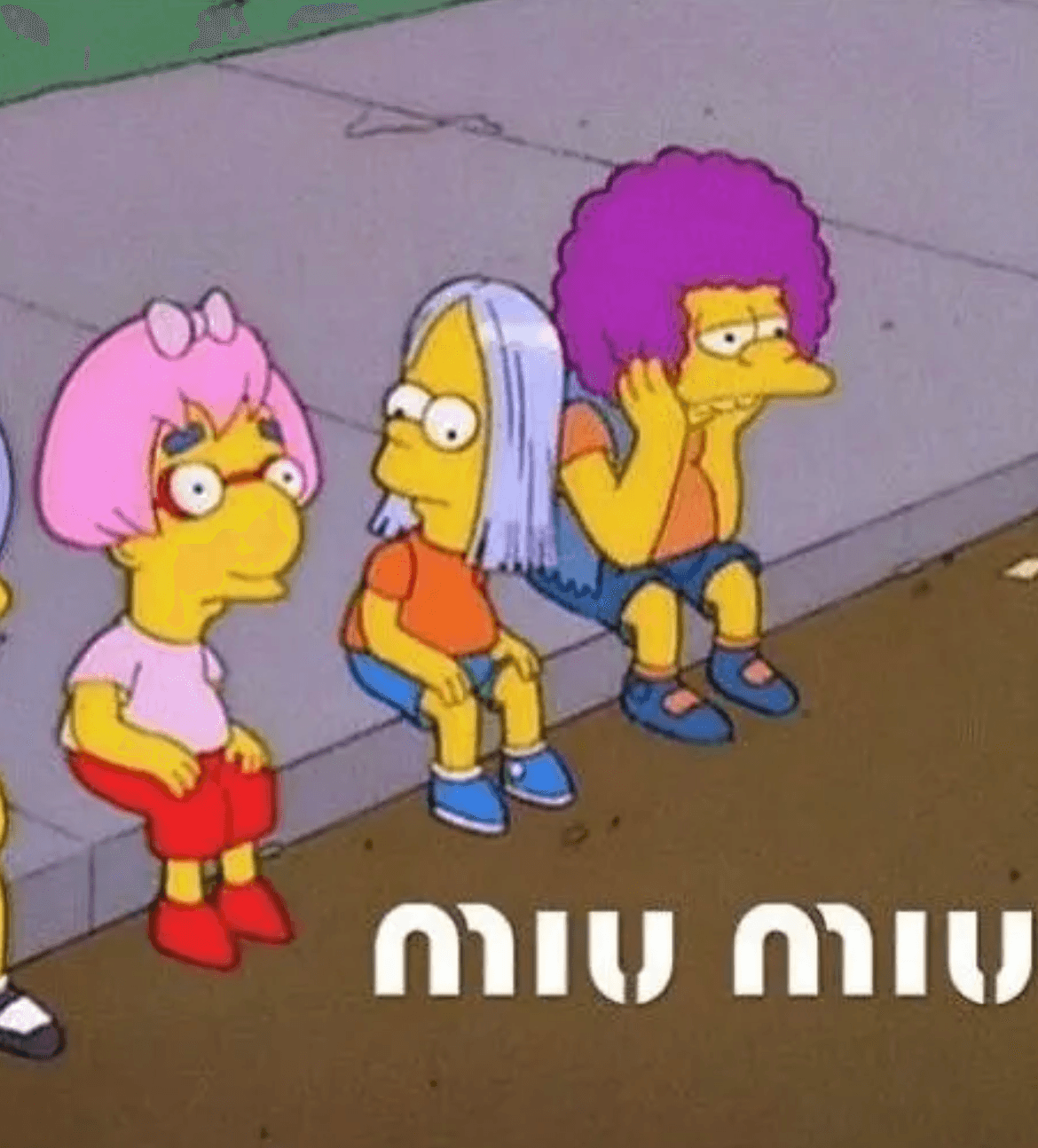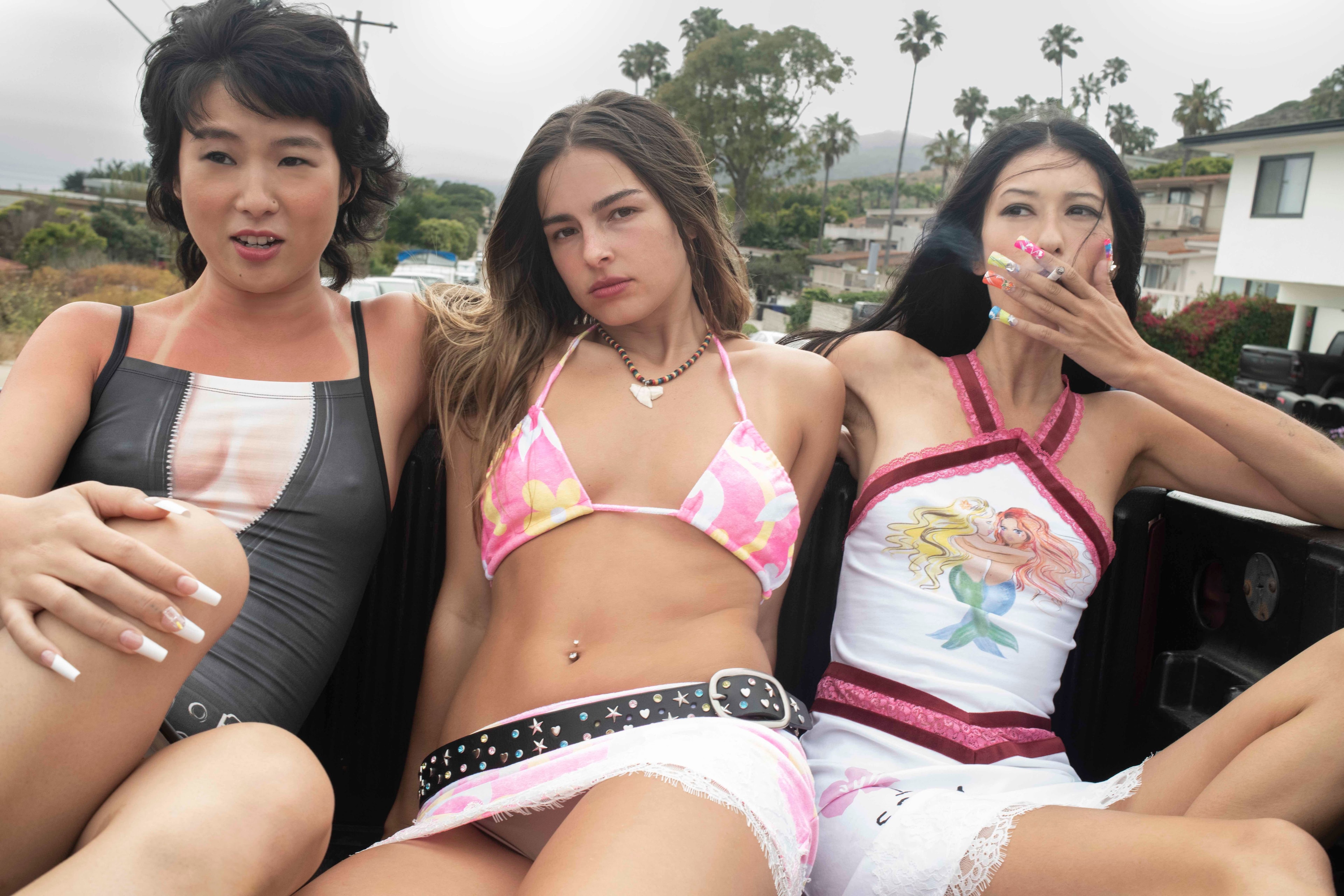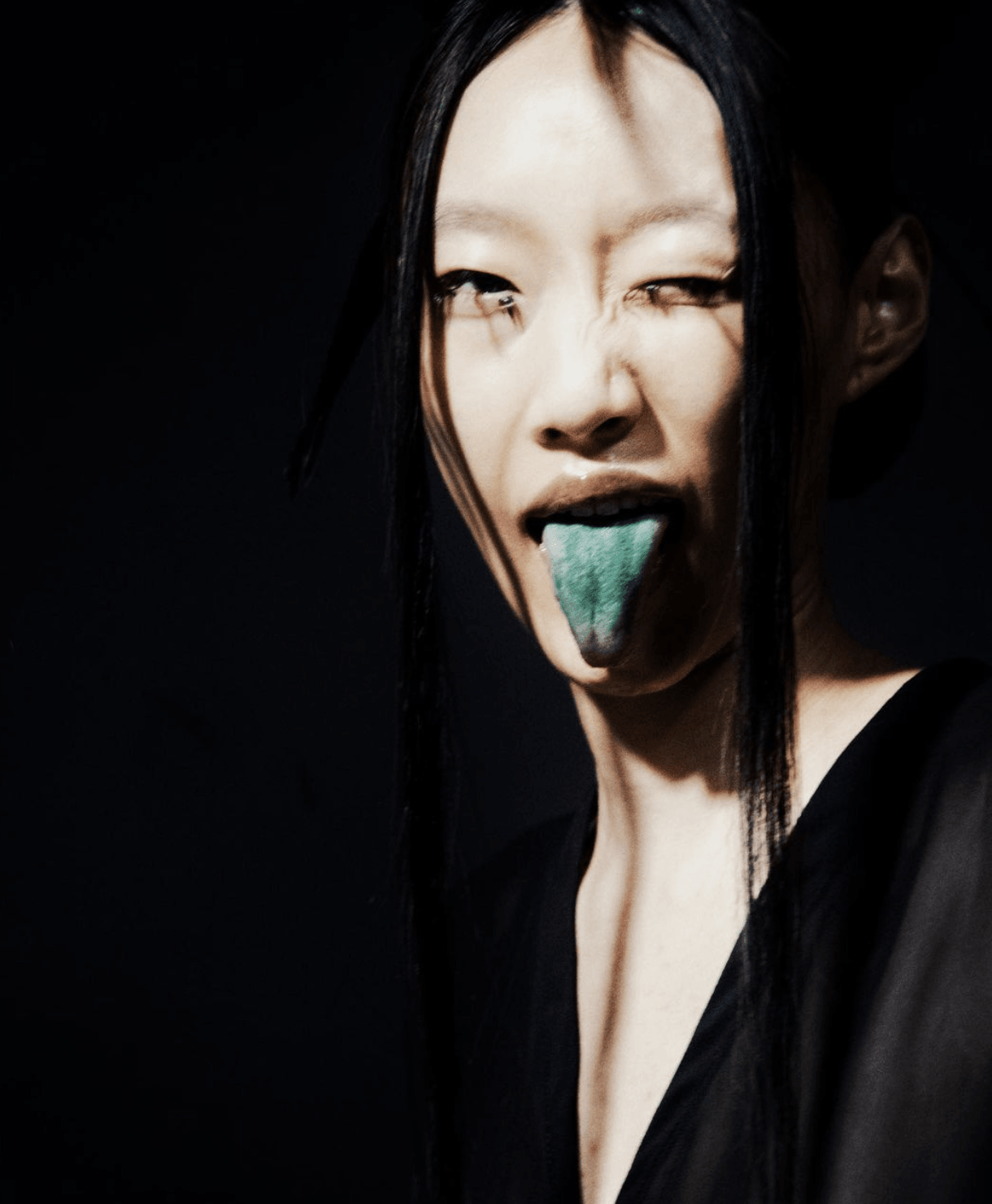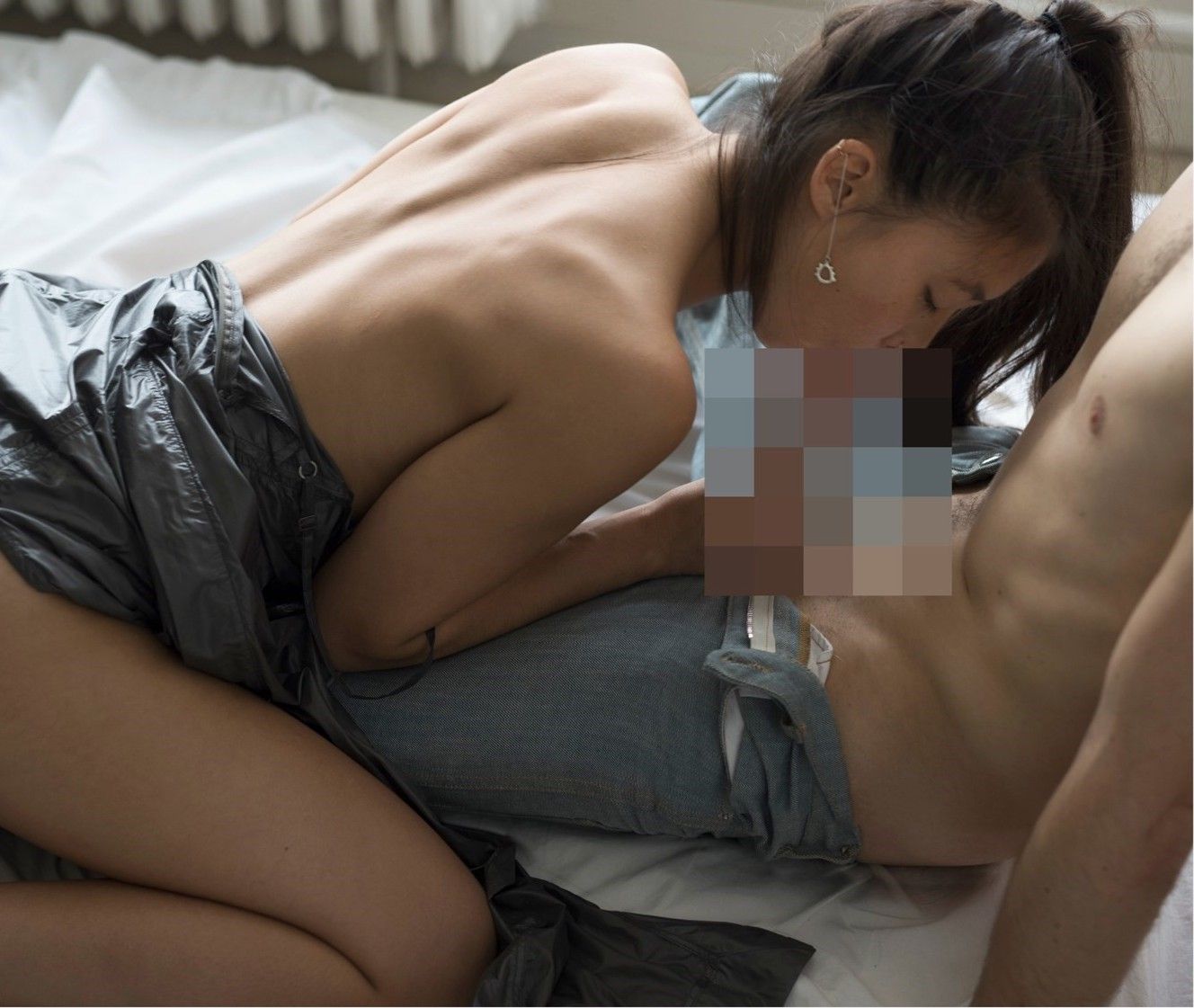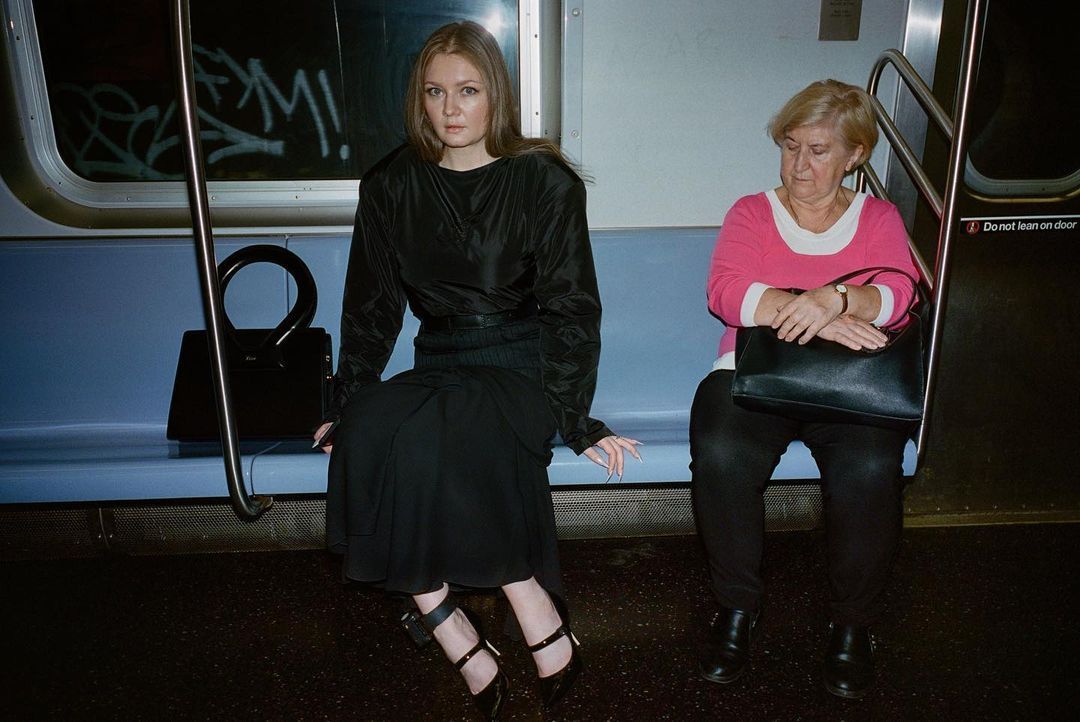Girlhood Is Not A Moment: SHUSHU/TONG
|AGNES MAGGIE SHU
Girlhood is not a moment. SHUSHU/TONG have been looking at girlishness for almost a decade, long before it was usurped into the microtrend-trend cycle.
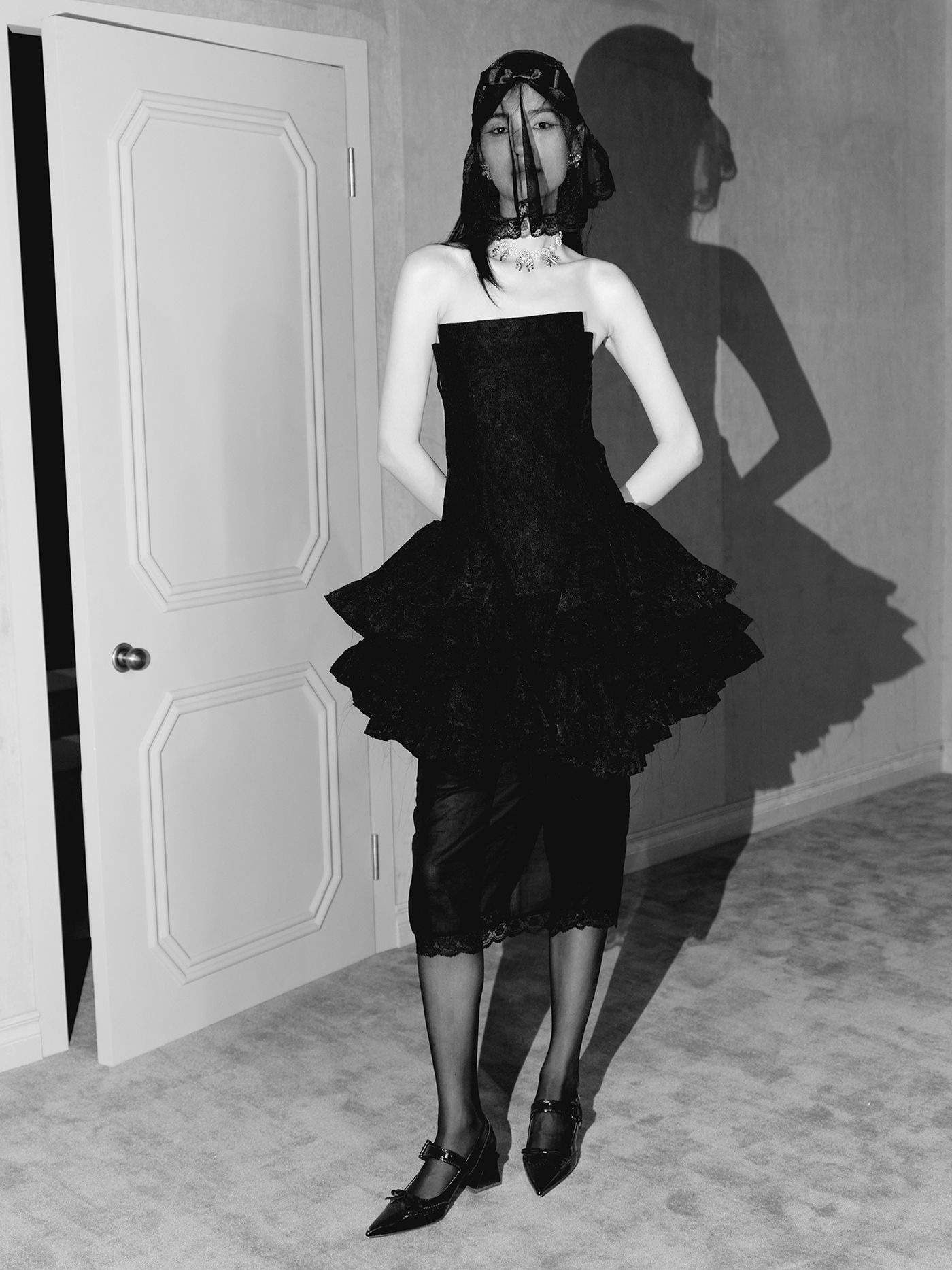
For founders Liushu Lei (Shushu) and Yutong Jaing (Tongtong), their womenswear label SHUSHU/TONG is simply a channel for their “dream girl.” The diction of “girl,” over “woman,” is one that they have been explicit about since their first collection in 2015, whose officecore pinstripes and megawatt bows preceded today’s It girl uniform. “Girl” germinates a feeling of giddiness for femininity in all its forms, feeding into SHUSHU/TONG’s examination of the subject that flirts with French erotica in tandem with Japanese anime, notions of purity matched with horror.
Alongside contemporaries Rui Zhou, Angel Chen, and MARKGONG, SHUSHU/TONG are part of the second wave of designers from China—a market that is rapidly evolving, in part due to its minimal existence only 30 years ago. Where the first wave of designers focused on establishing China in the fashion scene and leaned into cliché references like jade, dragons, and Chinese characters (that don’t actually make sense when translated into English), the new generation, much like the current abstraction of girlhood, is centered around just trying to be.
In conversation with Agnes Maggie Shu, Shushu and Tongtong speak on being “Made in China,” having such a work ethic that they can turn a whole village into a temporary factory, and continuing an open dialogue with their buyers.
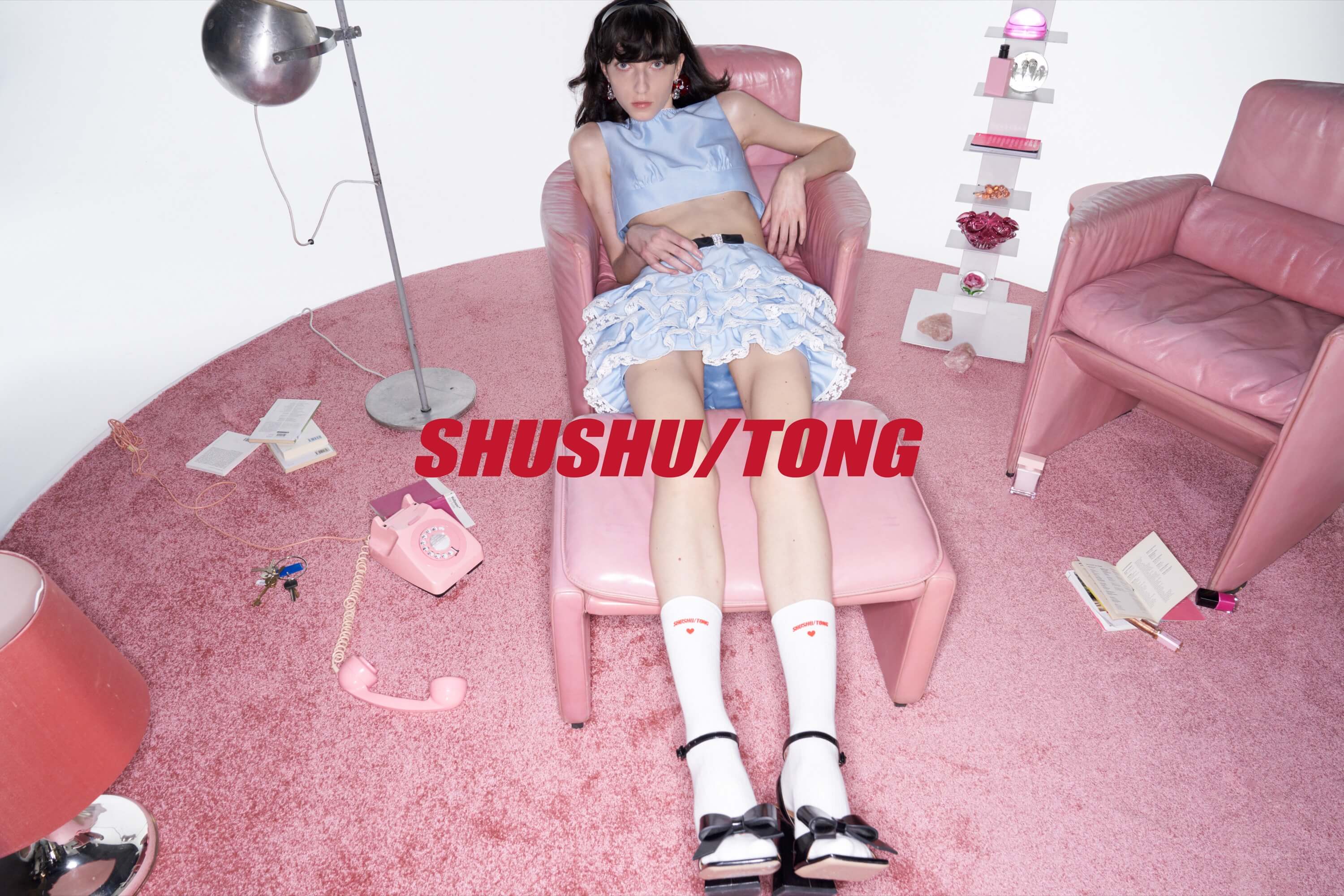
AGNES MAGGIE SHU: Japanese cyberpunk, kawaii, the recent Hello Kitty resurgence—Southeast Asian cultures and street styles are more prominent in Western media than ever before. It seems to be rewriting the stigma around the “Made in China” label. Is this ever on your mind?
SHUSHU: We want to be good designers, and we just happen to be Chinese.
TONGTONG: “Made in China” quite literally helped us to become more successful as designers. We have a supply chain that is very, very ready.
AMS: The supply chain is more localized. But there is also a different attitude to work.
SS: You get used to this efficiency in work, and it becomes so difficult to move somewhere else. For example, during the pandemic, we had one month until Paris Fashion Week and China was in lockdown. So, our technician went back to his hometown in the countryside, which is famous for its savoir-faire, and mobilized the whole village into a small temporary factory to produce just enough samples for fashion week. This is how we work.
TT: I feel like the Chinese always set work as a priority. We studied in London, so we know how crazy it can be.
SS: Well, we definitely benefit from this culture.
AMS: Did you ever want to work in London?
SS: Yes. That’s why we started our brand so early. After graduation, we wanted to apply for the entrepreneurship visa, and they asked us to write a 6000-word business plan. I haven’t even written something in Mandarin that is 6000 words.
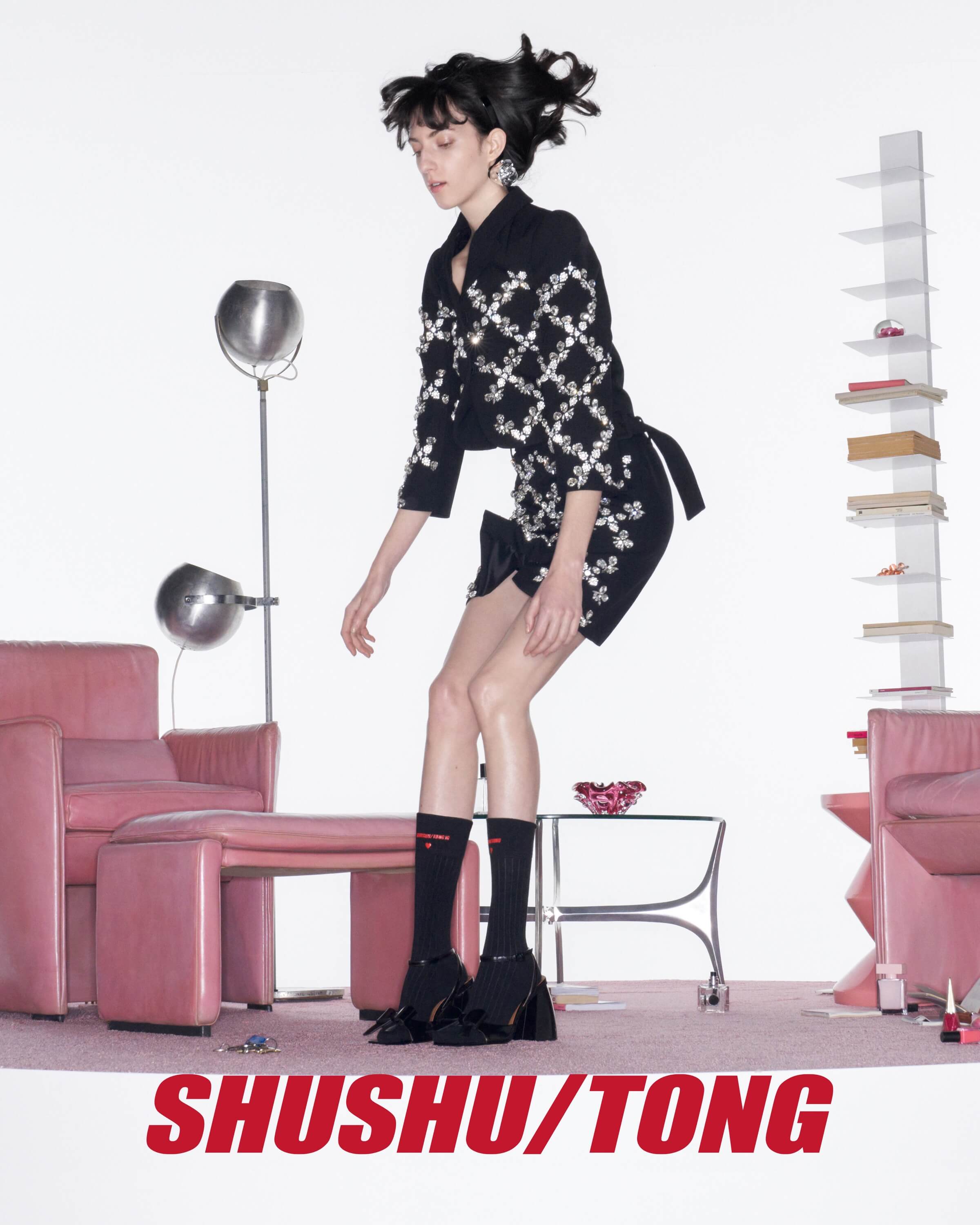
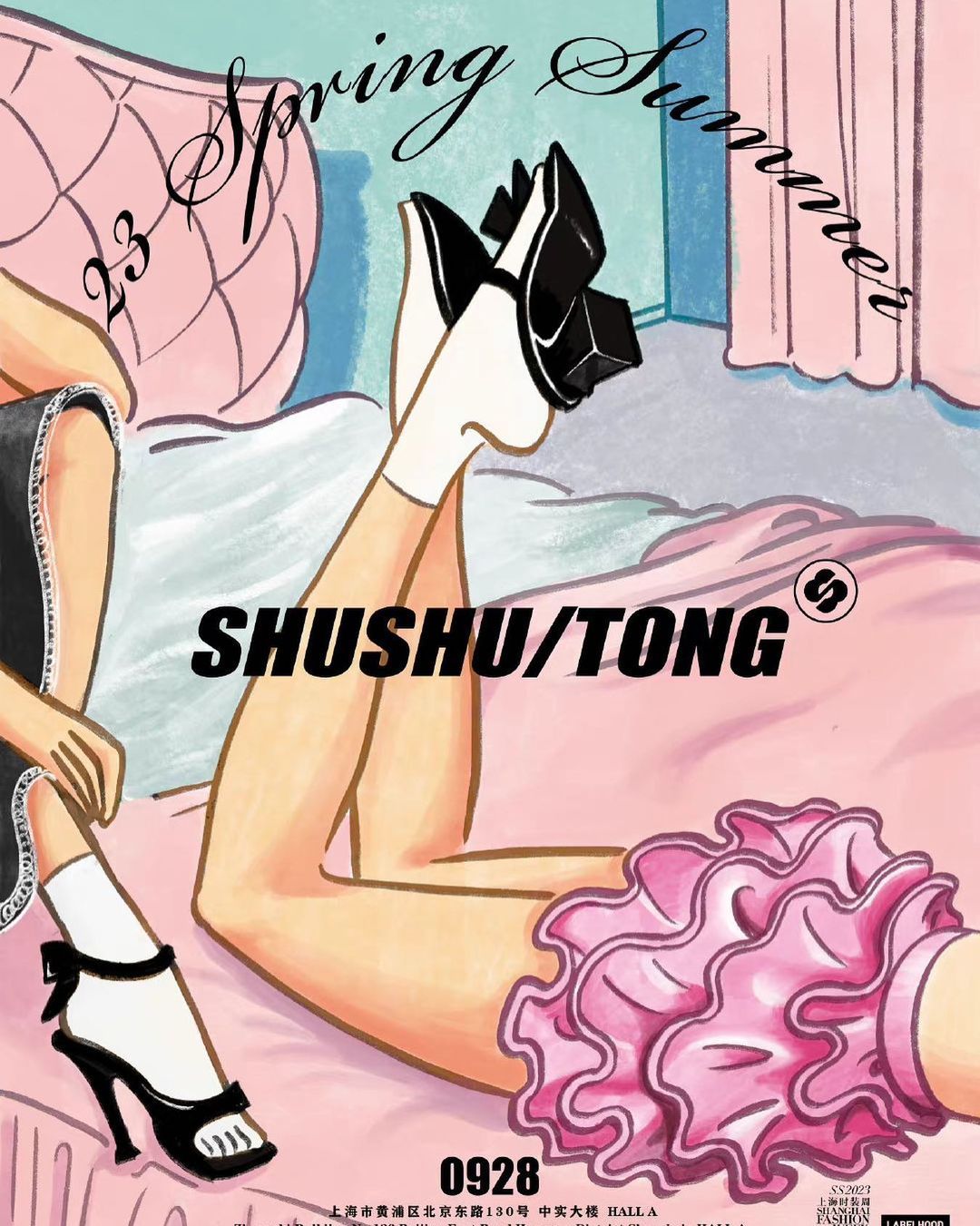
AMS: So, it didn’t work out. Would you relocate to London now?
SS: We have gotten used to the work style in China. Our studio switches to six-day work weeks one month before the main collection runway. If there is something urgent, there is always a way to find help. For example, our print factory is located in Shanghai, and if I need to see something that day, they can deliver it to me within the hour.
AMS: Efficiency is the key to success.
SS: Yes.
TT: Yes!
SS: I mean, we are very keen on creating a convenient lifestyle.
TT: [Laughs.]
SS: You know, nowadays we do not even use menus in restaurants. You’re physically in the restaurant but you order online.
AMS: Have you noticed a difference in the regional consumption patterns?
SS: Asia loves monochrome, like black, gray, and white. We value these basic colors. You can see it in the orders from buyers. It’s very different in Europe and America, they love prints, they love bold colors, they love embellishments. Print is always included in our collections, which gives more choice for European and American clients. We had a client who wanted us to do a capsule collection for them with a very sharp green color. We had to reject it because we don’t believe that our other customers will buy it.
TT: We get very different feedback from our buyers. I remember during one showroom, we had feedback from one European buyer who loved what we did but since we used gingham fabrics, it reminded them of their tablecloth. They didn’t want to feel like they were wearing their table.
AMS: Why do you think this is?
TT: Our lifestyles aren’t centered as much around this partying or gathering culture. There are very limited occasions to wear these bright dresses in our culture. But I think it’s a different story in Europe, where it is more common to set aside this time to really dress up for parties.
AMS: Shushu, as the creative director of the brand, you have previously spoken about having an awareness of entering this space with a male gaze. How has gender colored your experience?
SS: I do the design, but I don’t wear the designs in real life. I can think about what looks good on the model, and what looks good as part of our brand, but I can’t imagine how the wearing experience would affect the real customer. There’s no access point for me to wear these clothes daily. Tongtong helps me with samples and lets me know if it’s comfortable. If we do really short styles, she can tell me if it’s too short, for example—it’s a sensitive and very personal feeling. So, that information is out of my understanding, because I do not have experience with it.
Ten years ago when I had just started my own brand, many newly graduated designers, myself included, didn’t care about how people would wear things in the real world and just focused on being creative. But actually, in the real world, not a lot of customers would wear something like that.
AMS: The dialogue around girlhood is changing. It’s moving away from the notion that “beauty is pain.” Is comfort important to your image of femininity?
SS: It wasn’t important. Now it is. Back in 2015, we said it was fine. If people like it, they will buy it. But even for us, as customers, if we find a brand and they produce great, but uncomfortable pieces, we wouldn’t buy it either. It’s like using mohair—if you wear a mohair cardigan, you have to wear a T-shirt underneath because it’s uncomfortable. But brands expect girls to be naked under it.
TT: With no lining, too. We’ve stopped using mohair, at least in the last few seasons, because it hurts to wear. Customers don’t like it. The feedback was that it’s just too itchy.
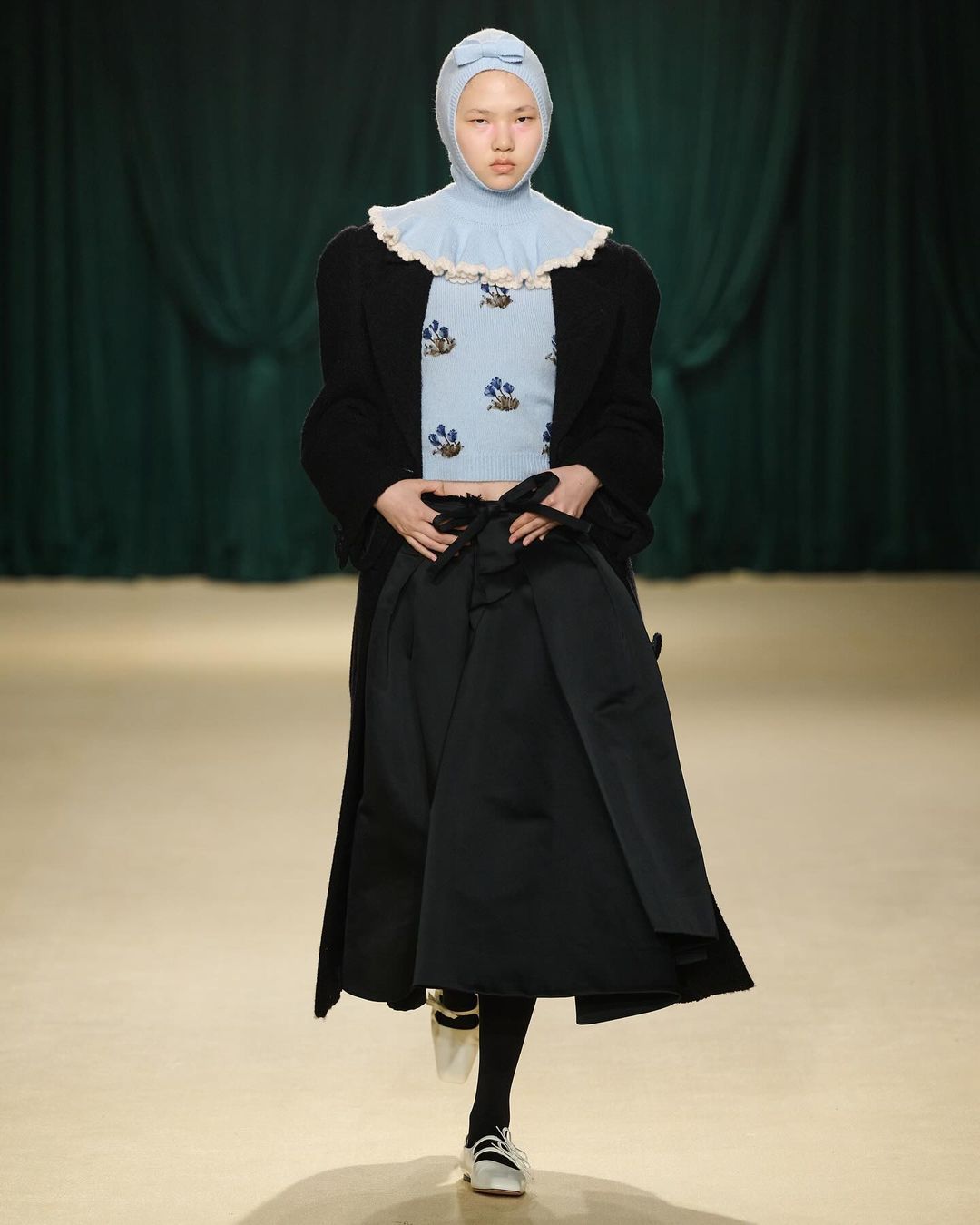
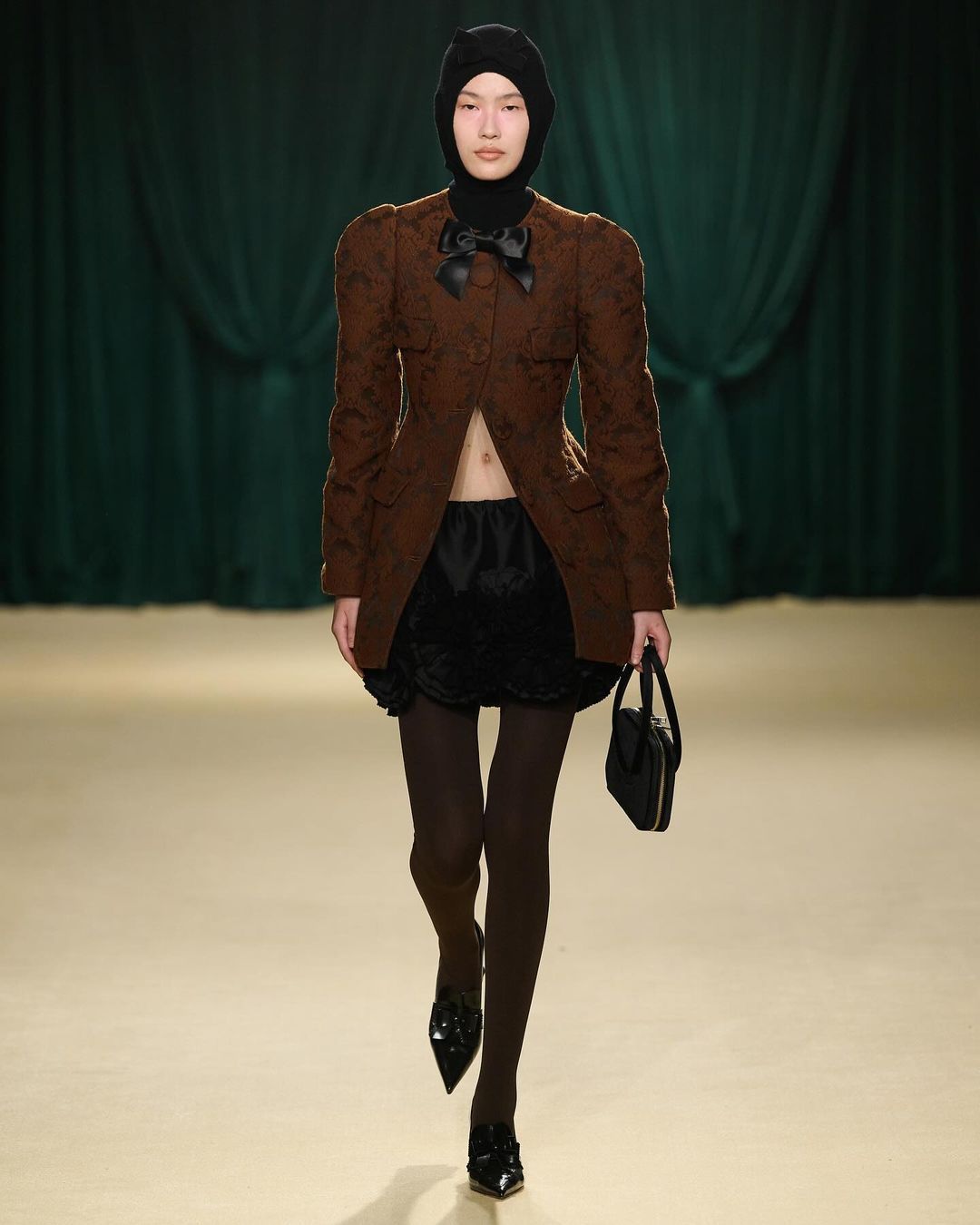
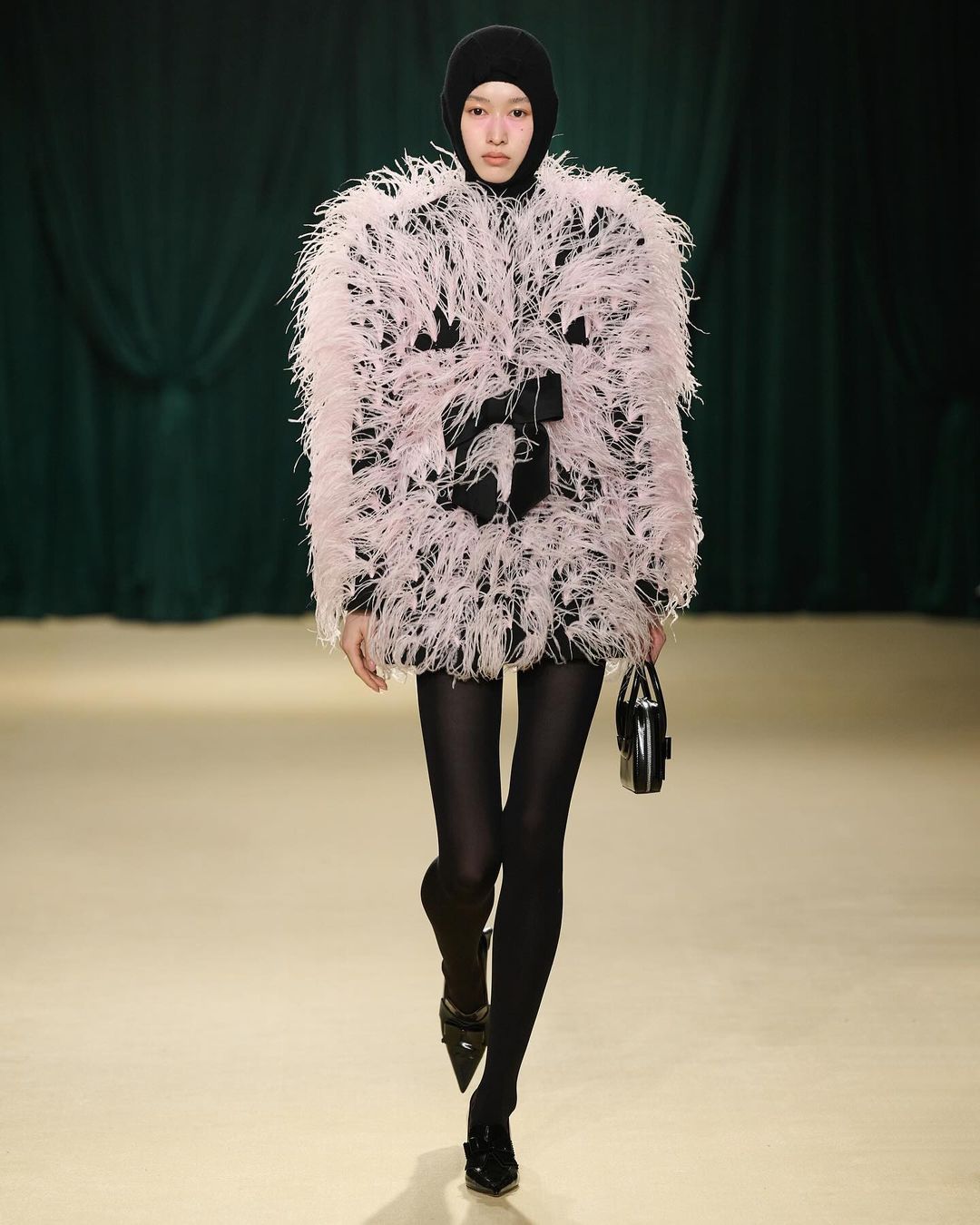
AMS: You’ve spoken about how much of your identity is fed into your designs. It’s particularly interesting to think about this in the context of the coquette aesthetic and the ribbon motif blowing up as a microtrend, which has been part of your brand identity for almost a decade now. Have you felt a need to distinguish yourselves now that this aesthetic has entered the mainstream?
SS: I think we should be grateful that what we like is becoming a trend. It has definitely helped our business, and, after years of effort, I think that people will connect to our authenticity. It’s not necessary to be different all the time. It’s not like we set out to be coquette. We just do what we like.
The SHUSHU/TONG girl is not shy about sex. She should be open in her sex appeal but doing it in her own way. Maybe with a little bit of cuteness. We always think about balance, in the fabrics, models, and styling. Maybe I’ll use a masculine fabric with a very feminine silhouette. The length of the skirt and how deep the neckline will go. We’re always playing in the in-between.


AMS: It feels like people are using brands as a form of identity more than ever. Even the luxury brands are feeding into it. Yet, you’re designers who don’t indulge in logomania.
SS: I just don’t like it.
TT: It’s a brand new thing for us, for this generation. For our parents’ generation, their first ever point of reference in fashion was a logo. It was just the easiest way for them to approach fashion. Our generation is perhaps more fashion educated, so it can become something more than a logo. I think in two or three generations’ time, the industry will be more complete, more lively.
SS: There’s definitely people who buy in through logos. But life is hard, and it’s kind of the same as people being into sugary sodas. For me, my guilty pleasure is barbecuing. Maybe it’s a bit unhealthy, but if you’re not madly obsessed about it and it’s not killing you financially, then it’s not that bad. A customer does not have the obligation to be an expert about luxury or fashion. Their only obligation is to be happy. And I’m not saying you can buy happiness, but…
Credits
- Text: AGNES MAGGIE SHU
